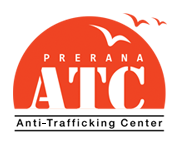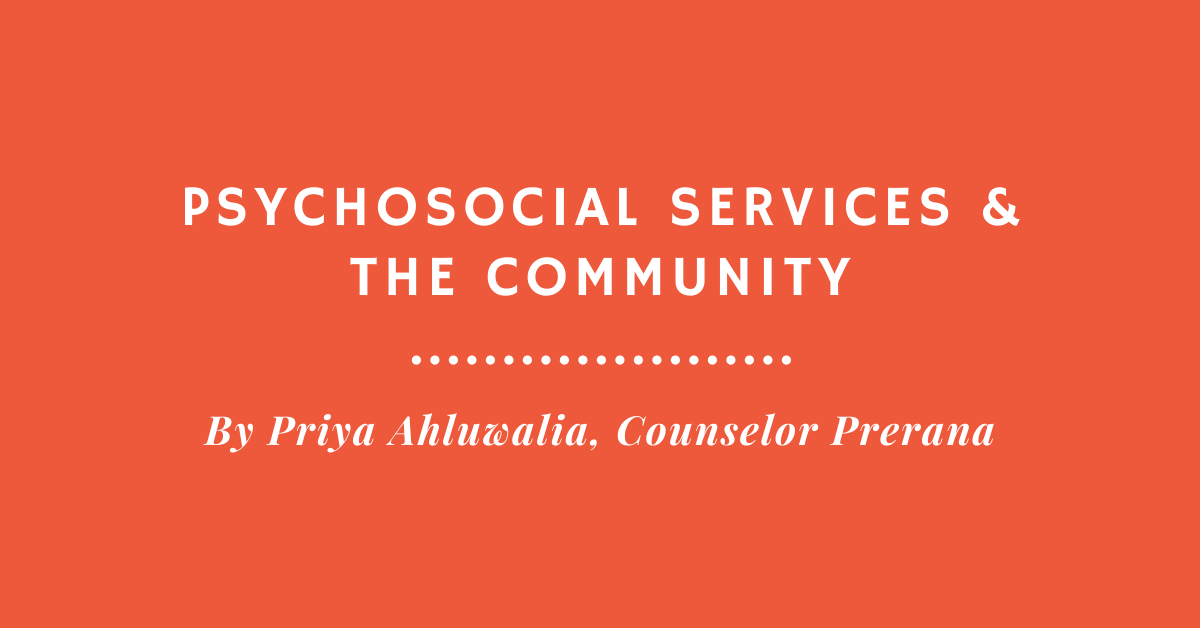
Rashmi Taylor
Project Co-ordinator, Anti-Trafficking Center
In February 2020, Ms. Rashmi Taylor a project coordinator at Prerana’s Anti-Trafficking Center (ATC) visited the Budhwar Peth red-light area. Apart from working with the ATC team, Rashmi also works with Prerana’s Institutional Placement Program (IPP) and After care projects. The visit was conducted as a part of the regular follow-up visits conducted by the IPP team. Through this blog, Rashmi shares her experience and learnings from her 1st visit to Budhwar Peth and the child protection services available there in.
May 2016 was when I first entered the gates of Dagadi Shala, Khetwadi. On the ground floor was a room with about eight women social workers working tirelessly. Some discussing cases, some busy with documenting reports while a couple of them talking to children and planning a children’s event. I had joined as a Master’s of Social Work first-year intern. Every task given was a new learning for me.
It was after about a week through the internship when a colleague asked me if I would like to accompany them for the Community Outreach. It was during this time that I got to understand what lies within the buildings (brothels) that I passed every evening and morning to come to the Prerana Center. Along with the Outreach Team, I visited the Kamathipura and Falkland Road Red- Light Area where I saw women welcoming the team, greeting them, and enquiring about their health. I remember one lady stopping us and informing the team about a child who had come along with his mother from their village. The team then casually went up to her room in the building and informed her about Prerana’s Night Care Center. Suddenly, a face popped up with a lady in a brightly colored blue salwar kurta declaring “ha ha bhejo bhejo- didi log bahot ache se khyal rakhenge iska. Mera bacha bhi jata hai waha” (Yes! Yes! Please send your child. She will be well looked after. Even my child attends their center). This was the first time that I had experienced beneficiaries acknowledging the importance of the services provided and the process of referrals. I had seen children enjoy, play, study, eat and exercise at the Night Care Center, but here were their mothers understanding the importance of it and ensuring that no child in the area remains unprotected.
This visit helped me sketch the Kamathipura and Falkland Road Red-Light Areas of Mumbai. However, I never got an opportunity to visit the RLA’s or organizations working in the RLAs in other cities until 2020. As an intervention, Prerana conducts follow- up visits in cities surrounding Mumbai depending upon the need of the child. The visits are conducted to ensure the well-being of the child and provide the child with the psychosocial support they might require. In February 2020, a follow-up visit was conducted to Pune to follow-up with children whom Prerana worked with and were placed in Child Care Institutions in the city. During this follow- up visit, a team from Prerana also visited the Mohar Day and Night Care center run by Swadhar IDWC, Pune.
Swadhar’s Mohar project is a facility to provide shelter to the children of victims of commercial sexual exploitation and trafficking. The organization began its operations in the Red-Light Area in 199. During this visit with a team member, I got to know about how the project began as a Day Care Center that provided creche facilities for an hour. They gradually increased their services to 3 hours, 6 hours, and then extended to providing day and night care services to the children by 14th November 2007. The services were provided to children from six years to twelve years of age. I recalled that back in Mumbai, Prerana provided Balwadi facilities for children from three to six years of age; a Night Care Center service for girls and boys till the age of eighteen and fourteen years respectively in order to protect the children living in the RLA from any kind of abuse. Additionally, Prerana also runs a facility for boys between the fifteen to eighteen years age group, sometimes they are older than eighteen who require night shelter services. Thus, I instinctively enquired about the children in the RLA of Pune who were younger than six years and those above twelve years of age. The Mohar team shared that women living in the RLA would leave their children with the brothel- keepers or other caretakers while the women would solicit. Usually, once the child turned six years of age, the women enrolled their children into the Mohar project. However, as the Mohar projects Day Care Facility could accommodate children only till twelve years of age, a child older than 12 would be enrolled into a Child Care Institution if found to be a Child in Need of Care and Projection[1] according to the Juvenile Justice (Care and Protection) of Children Act, 2015.
Back in Mumbai, I had often heard our Outreach team talk about the initial days of the establishment of Prerana’s Night Care Center where the brothel managers or pimps accompanied the women to the meetings that were organized for mothers. This was done to keep an eye on the women and controlling her from running away. The teams had to firmly request the pimps to step out of the meeting room as the meetings were organized for the mothers to talk about their children. These meetings were also an important platform to empower the women to share their thoughts and opinion regarding their children and that gradually led to them talking about themselves. Further, in some cases where women had to stay awake the entire night found it difficult to attend the meetings, and hence, their pimps wanted to attend them on their behalf. No matter what the case be, there were women who were unable to “spare time for their children” due to their situation. Curious to know if the same dominance was experienced in the Budhwar Peth area, I shared Prerana’s experience with the team. To my surprise, the team stated that women in the Budhwar Peth Area were not quite dependent on Pimps. The Swadhar team did not have to face many challenges in terms of resistance by the pimps to let women take their children to their center. This was most probably due to the familiarization of the concept of creches within Red-Light Areas by the late 1990s.
After a discussion about the shelter, nutritional and educational services provided to children as a part of the project, the Prerana team was taken around the Mohar residential facility. As the building was located at the periphery of the Budhwarpeth RLA, the Mohar center was quite spacious unlike the current Night Care centers in the congested red- light areas of Kamathipura and Falkland Road in Mumbai. The building was a well-guarded building that was a school earlier. It was spacious and well furnished with bunk beds for the children, a study room, a changing room for girls, a special locker room, a fully equipped computer room, a library, and their kitchen. The visit around the facility was concluded with a discussion on how the children had participated in the decoration of the facility and their suggestions were taken into consideration while fixing the menu etc. The visit was a great experience for me to understand the functioning of a Night Care Center that provided facilities to the children of women in the sex trade in a city other than Mumbai.
To be or not to be? Questions on motherhood searching answers
[1] Defined under section 2 (14) of the Juvenile Justice (Care and Protection of Children) Act, 2015
Rashmi was accompanied by Flarantxa Pereira. Click here to read Flarantxa’s learnings and thoughts on the red-light area and the sex trade in Budhwar Peth.
The blog post was first published on Dr. Pravin Patkar's Blog 'Expressions'. The post sheds light on the impact and Read more
In the current COVID and lockdown situation, one of the adversely affected communities is the migrant communities. Our Sanmaan project Read more



